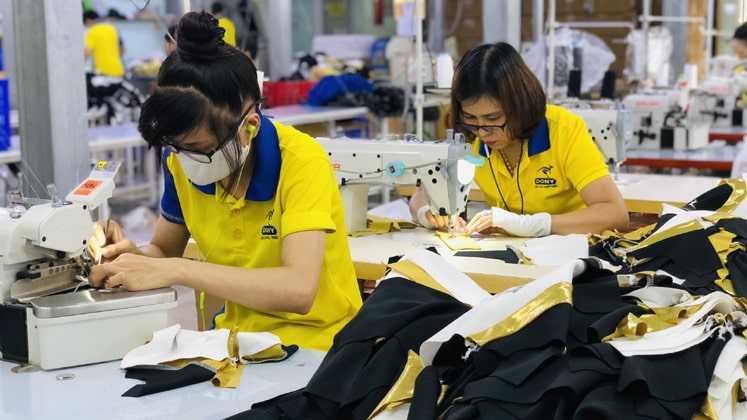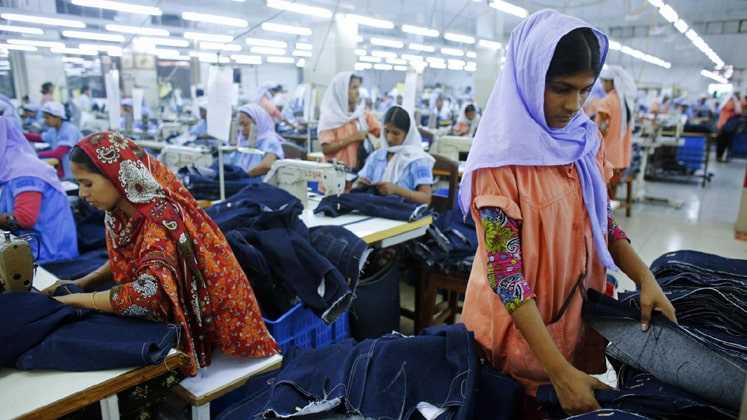
Last couple of years have seen a strong competition between Bangladesh and Vietnam to be the second largest exporter of apparel, after China, which is by far the largest amongst all countries. The two manufacturing destinations – despite producing quite different product categories and having different working styles – make it an interesting comparison. Bangladesh was able to maintain the lead till 2019; however, the ongoing pandemic has tilted the scale in favour of Vietnam as Bangladesh got hit hard by its devastating effects, while Vietnam was able to cushion the blow.
China, with exports worth US $ 142 billion, stands as the world’s leading apparel exporter with 31.6 per cent global exports, and this is despite a 7 per cent year-on-year (Y-o-Y) drop in 2020. The manufacturing destination was followed by Bangladesh at a distant second since 2010 with a global share of 4.2 per cent and Vietnam a close third with 2.9 per cent.
A recent Statistical Review issued by WTO (World Trade Organization) declares that Vietnam surpassed Bangladesh last year, bringing it down to the third spot in the list of world’s leading textile and garment exporters. As of 2020, Vietnam’s share in the global apparel export market was US $ 29 billion, with an increment from 6.2 per cent in 2019 to 6.4 per cent in 2020. Meanwhile, Bangladesh amounted to US $ 28 billion, with a drop from 6.8 per cent in 2019 to 6.3 per cent in 2020.
It is important to understand that Vietnam statistics includes exports of both textile and apparel. The General Department of Customs in Vietnam claims the country’s exports stood at US $ 29.80 billion, for the year 2020 and 10 per cent of this value, amounting to US $ 2.98 billion, was solely from textile products (fabrics, yarns and fibres). The apparel export, therefore, is valued at US $ 26.82 billion.
The textile exports of Bangladesh are significantly negligible. Hence, the WTO figures (US $ 28 billion) consider only the apparel exports – knit and woven garments. EPB (Exports Promotion Bureau) also reported that Bangladesh exported US $ 27.50 billion worth of garments in 2020.

Garment exports in 2019 amounted to US $ 30.21 billion and US $ 33.07 billion for Vietnam and Bangladesh, respectively. Bangladesh, therefore, experienced a 16.84 per cent decline in 2020 on Y-o-Y basis, while the decline for Vietnam was notably lesser at 9.21 per cent.
Also Read: Ford vs Ferrari Movie – A perfect case study for apparel factories
Factors that influenced Vietnam’s growth
Amongst the many factors that helped Vietnam remain stable during the pandemic, a big edge was provided by the EU-Vietnam Free Trade Agreement (EVFTA), which came into force on 1st August 2020, allowing Vietnam to reap benefits from the zero-duty scheme. This Bilateral Trade Agreement provides Vietnam a distinct advantage over Bangladesh.
Vietnam also benefited from the orders that shifted from China during the beginning of 2020, as it was the nearest destination with traits similar to China. Even before the pandemic, orders had started to shift more to Vietnam due to the US-China Trade War, compared to Bangladesh or any other Asian country. The country is also backed by Chinese investors allowing for vital progress in its exports and continuity for retailers. With most of these orders redirected to Vietnam, the country was also least affected by the COVID-19 pandemic.
Offering a comprehensive sourcing experience, Vietnam also succeeded in manufacturing diversified goods at competitive prices, which Bangladesh was unable to provide. While Bangladesh is perceived as a manufacturing hub for low-end items, Vietnam produces high-end clothing with stronger industry linkages, better availability of synthetic raw material and educated workforce.
Professor Mustafizur Rahman at CPD (Centre for Policy Dialogue) highlights Vietnam’s unique strengths that allow it to overstep Bangladesh’s shortcomings. “Vietnam leads in labour productivity, capital productivity and product diversification. Bangladesh needs skill improvement programmes, manufacturing shifts from low-end to high-end products, value additions and reduction in lead times.” Shahidullah Azin , the Vice President of BGMEA (Bangladesh Garment Manufacturers and Exporters Association) also highlights the difference in the impact of disruptions caused by the COVID-19 pandemic. “Vietnam’s export remained unaffected during March-May 2020, whereas Bangladesh’s industry nosedived during the beginning of the pandemic.”
While the number of exporters might exceed in Bangladesh, it is Vietnam that takes the lead in value addition. Bangladesh also lags in the production of synthetic fibre-made garments, despite its recognition as the future of the garment export industry. Requests have been made to the Government for 10 per cent cash incentives for man-made fibre-based products in the current fiscal year. The industry looks forward to seeking required approvals and duty-free sanctions on man-made fibres, to pave its way back to its original ranking on the global list of garment exporters.
Also Read : Vietnam hits roadblock! 2021 supply chain disruption could impact growth

Post a Comment